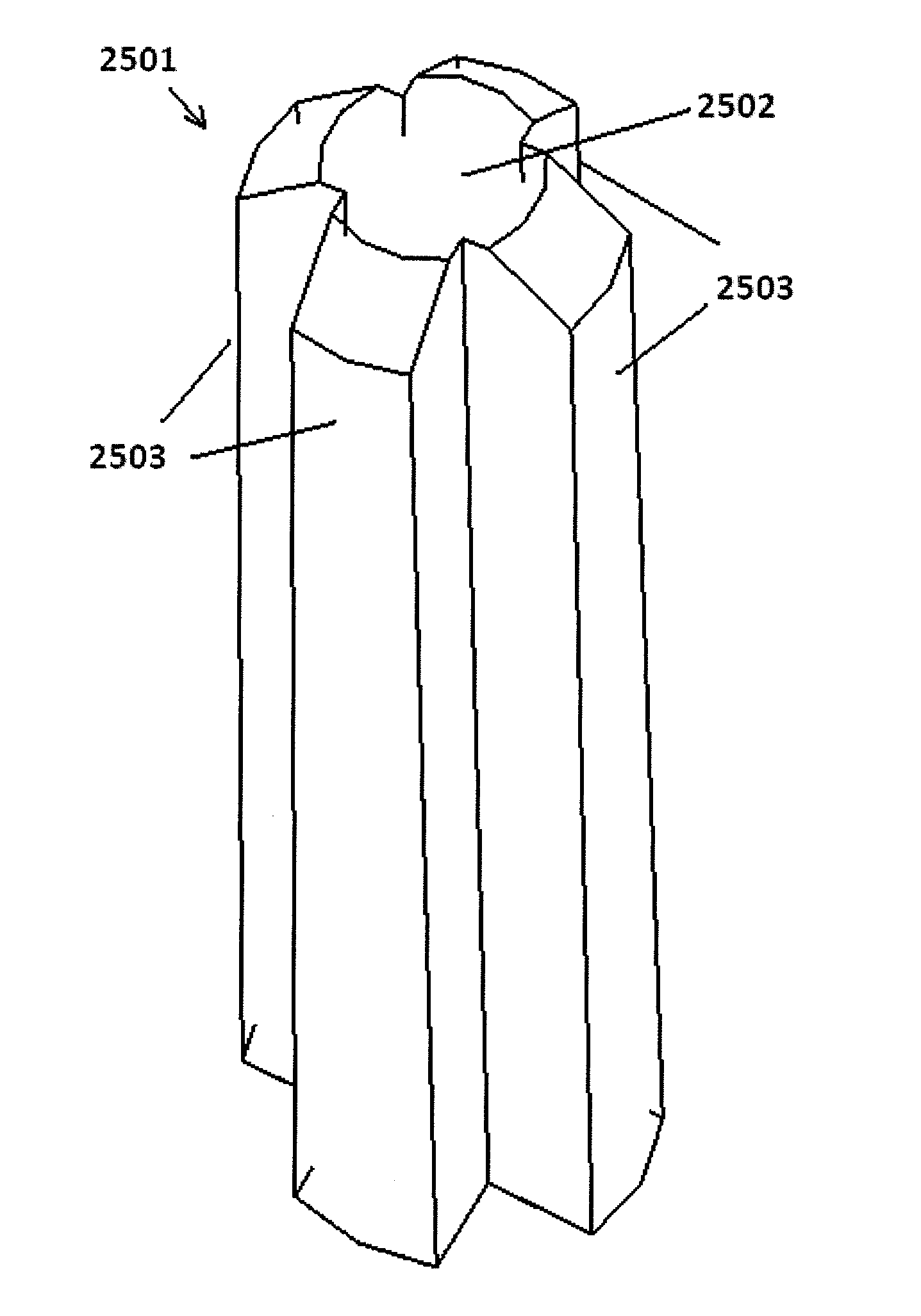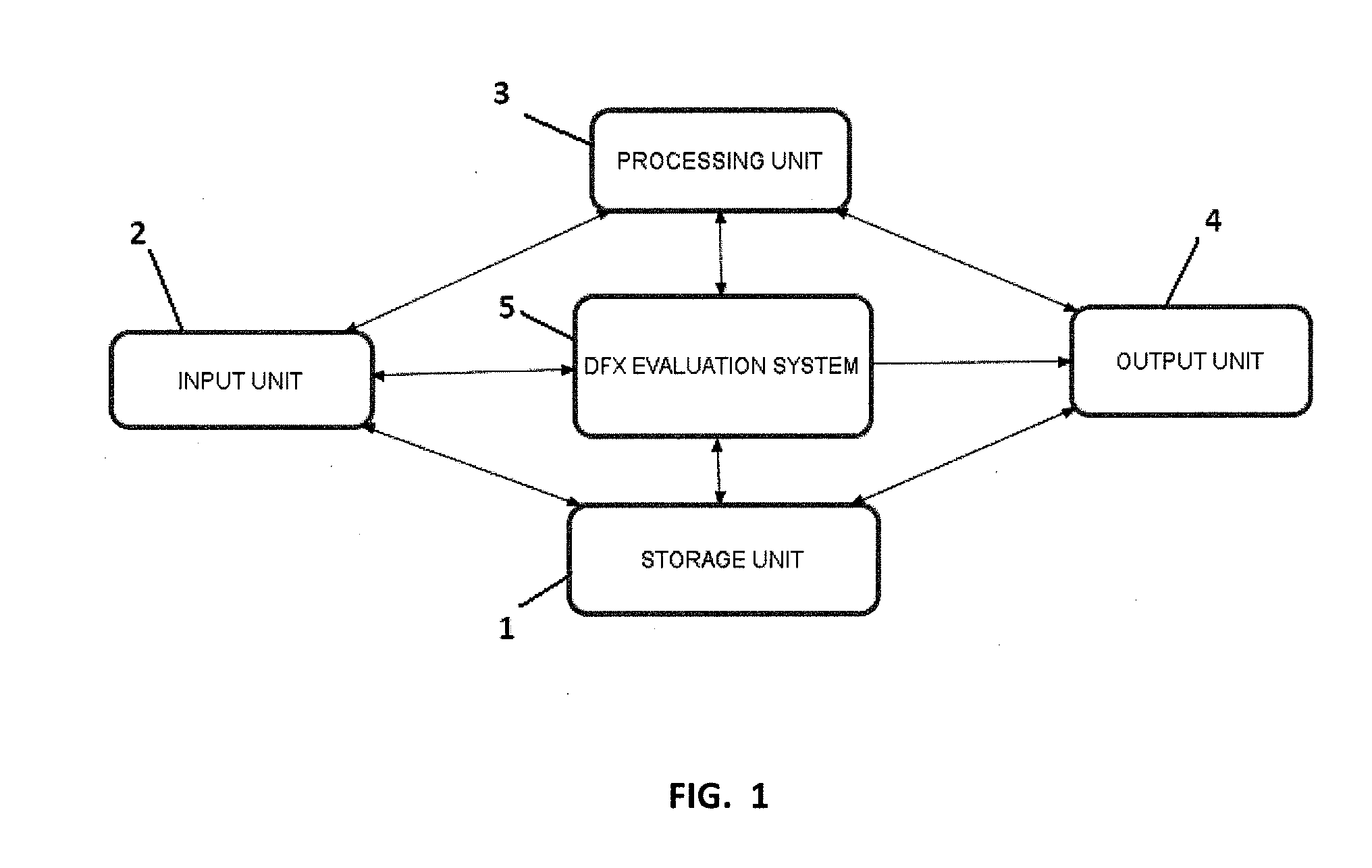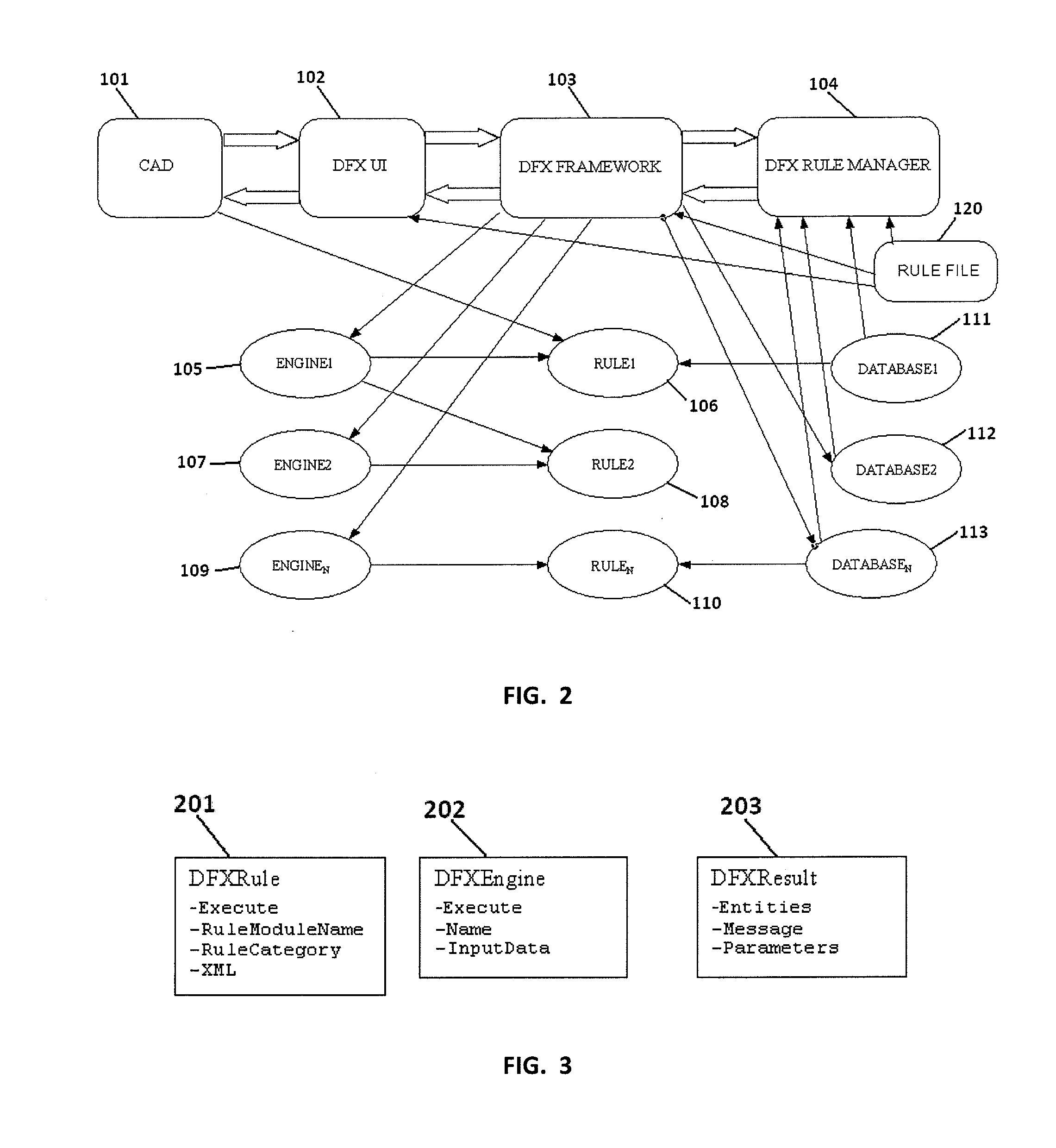Manufacturability Evaluation of Injection Molded Plastic Models Using a CAD Based DFX Evaluation System
a technology of injection molding and manufacturability analysis, applied in the field of computer aided design, can solve the problems of reducing the time to market of a product, increasing the cost of a design feature which may require the use of non-standard tools, and lack of proper automation tools, so as to achieve the effect of quick writing of rules and easy implementation
- Summary
- Abstract
- Description
- Claims
- Application Information
AI Technical Summary
Benefits of technology
Problems solved by technology
Method used
Image
Examples
Embodiment Construction
[0051]Existing techniques for DFX evaluation are mainly manufacturing and assembly driven; are cost based and not easily extensible to address other DFX requirements or automate the DFM practices referred to by an organization. In an exemplary embodiment of the invention, a system automatically evaluates the manufacturability of injection molded plastic models.
[0052]FIG. 1 is a block diagram of an exemplary system for manufacturability analysis of injection molded plastic CAD models, including: a DFX evaluation system 5, a data storage unit 1, a data input unit 2, a data processing unit 3, and a data output unit 4. The data storage unit 1 comprises a main memory and hard disk. Various program modules used to automatically recognize features and compute parameters are stored in the hard disk. The input unit 2 includes a keyboard and a pointing device. The output unit 4 comprises a computer display. The data processing unit 3 includes a CPU or a distributed processing framework.
[0053]...
PUM
| Property | Measurement | Unit |
|---|---|---|
| angle | aaaaa | aaaaa |
| thickness | aaaaa | aaaaa |
| wall thickness | aaaaa | aaaaa |
Abstract
Description
Claims
Application Information
 Login to View More
Login to View More - R&D
- Intellectual Property
- Life Sciences
- Materials
- Tech Scout
- Unparalleled Data Quality
- Higher Quality Content
- 60% Fewer Hallucinations
Browse by: Latest US Patents, China's latest patents, Technical Efficacy Thesaurus, Application Domain, Technology Topic, Popular Technical Reports.
© 2025 PatSnap. All rights reserved.Legal|Privacy policy|Modern Slavery Act Transparency Statement|Sitemap|About US| Contact US: help@patsnap.com



